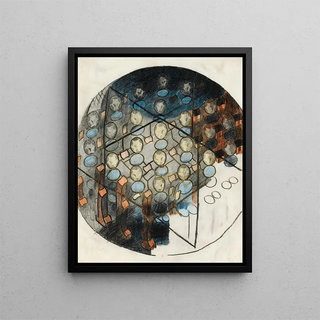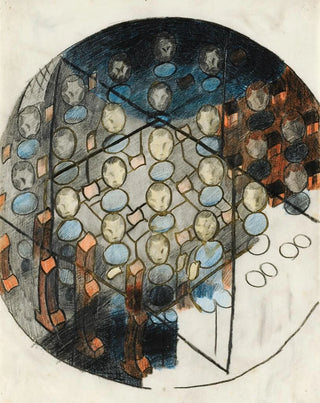Art print | In Münster, waiting project for the stained glass window of the Zwinglihaus, Zurich, Wiedikon, overall composition - Otto Meyer-Amden


View from behind

Frame (optional)
Art print in Münster, waiting project for the stained glass window of the Zwinglihaus, Zurich, Wiedikon, overall composition - Otto Meyer-Amden – Captivating introduction
In the artistic landscape of the early 20th century, Otto Meyer-Amden stands out for his bold and innovative approach. His creation, titled "In Münster, waiting project for the stained glass window of the Zwinglihaus, Zurich, Wiedikon, overall composition," embodies a harmonious fusion of tradition and modernity, while fitting into a rich historical context. This stained glass project, though ephemeral, testifies to the artist's relentless quest to explore new forms of expression. By immersing oneself in this work, the viewer is invited to question the role of art in society and how it can transcend time and space.
Style and uniqueness of the work
The uniqueness of this piece lies in its ability to blend a vibrant color palette with carefully arranged geometric shapes. Meyer-Amden, influenced by the currents of cubism and expressionism, manages to create a composition that is not only visually appealing but also evokes deep emotions. The flowing lines and striking contrasts between shadows and lights bring motifs to life that seem to dance on the glass, transforming a simple stained glass window into a true visual narrative. Each element of the composition is designed to capture attention and invite contemplation, making this work a perfect example of sacred art revisited in light of contemporary concerns.
The artist and his influence
Otto Meyer-Amden, an emblematic figure of Swiss art, established himself as a pioneer thanks to his avant-garde vision. His artistic journey, marked by training at the Munich Academy of Fine Arts and travels across Europe, profoundly influenced his style. By integrating elements of popular culture and societal concerns into his work, he succeeded in establishing a dialogue between art and everyday life. Meyer-Amden does not merely reproduce established forms; he reinvents, deconstructs them, and offers a new interpretation of reality. His work, although often rooted in

Matte finish

View from behind

Frame (optional)
Art print in Münster, waiting project for the stained glass window of the Zwinglihaus, Zurich, Wiedikon, overall composition - Otto Meyer-Amden – Captivating introduction
In the artistic landscape of the early 20th century, Otto Meyer-Amden stands out for his bold and innovative approach. His creation, titled "In Münster, waiting project for the stained glass window of the Zwinglihaus, Zurich, Wiedikon, overall composition," embodies a harmonious fusion of tradition and modernity, while fitting into a rich historical context. This stained glass project, though ephemeral, testifies to the artist's relentless quest to explore new forms of expression. By immersing oneself in this work, the viewer is invited to question the role of art in society and how it can transcend time and space.
Style and uniqueness of the work
The uniqueness of this piece lies in its ability to blend a vibrant color palette with carefully arranged geometric shapes. Meyer-Amden, influenced by the currents of cubism and expressionism, manages to create a composition that is not only visually appealing but also evokes deep emotions. The flowing lines and striking contrasts between shadows and lights bring motifs to life that seem to dance on the glass, transforming a simple stained glass window into a true visual narrative. Each element of the composition is designed to capture attention and invite contemplation, making this work a perfect example of sacred art revisited in light of contemporary concerns.
The artist and his influence
Otto Meyer-Amden, an emblematic figure of Swiss art, established himself as a pioneer thanks to his avant-garde vision. His artistic journey, marked by training at the Munich Academy of Fine Arts and travels across Europe, profoundly influenced his style. By integrating elements of popular culture and societal concerns into his work, he succeeded in establishing a dialogue between art and everyday life. Meyer-Amden does not merely reproduce established forms; he reinvents, deconstructs them, and offers a new interpretation of reality. His work, although often rooted in






